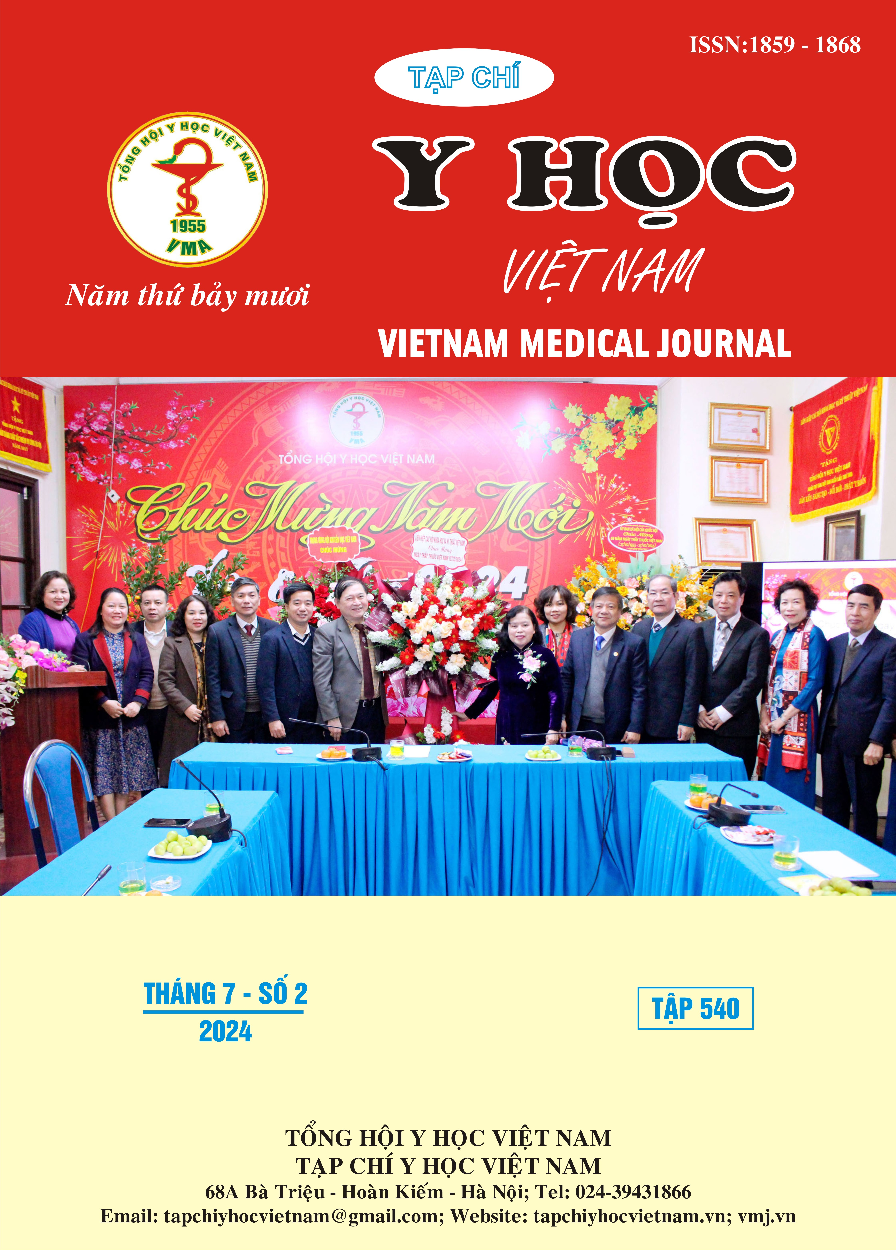ANTICOAGULATION USE AND SHORT-TERM OUTCOMES OF STROKE ASSOCIATED WITH ATRIAL FIBRILLATION
Main Article Content
Abstract
Objectives: To evaluate the status of indications and selection of anticoagulants and to determine the rate of adverse events within 90 days after treatment in patients with cerebral infarction and atrial fibrillation. Methods: Retrospective descriptive study with a sample population of patients with acute cerebral infarction or transient ischemic attack with atrial fibrillation treated as an inpatient at the Department of Neurology, University Medical Center HCMC, Ho Chi Minh City from 01/2018 to 02/2022. Results: Among 277 cases of patients with acute ischemic stroke and atrial fibrillation, the total number of patients who were prescribed OAC at discharge was 227 cases (82.67%). Of these, 13.54% of cases were prescribed vitamin K antagonist (VKA), and 86.46% were prescribed direct oral anticoagulants (DOACs). Rate of adverse events during follow-up: intracranial hemorrhage, gastrointestinal (4.5%); mucosal bleeding (2.7%); embolism - thrombosis (1.83%). Conclusion: The rate of using anticoagulants, especially DOACs, after acute cerebral infarction with atrial fibrillation is common because of their effectiveness and safety
Article Details
References
2. Arihiro S, Todo K, Koga M, et al. Three-month risk-benefit profile of anticoagulation after stroke with atrial fibrillation: The SAMURAI-Nonvalvular Atrial Fibrillation (NVAF) study. 2016;11(5):565-574. doi:10.1177/1747493016632239
3. Hwong WY, Abdul Aziz Z, Sidek NN, et al. Prescription of secondary preventive drugs after ischemic stroke: results from the Malaysian National Stroke Registry. BMC Neurology. 2017/11/23 2017;17(1):203. doi:10.1186/s12883-017-0984-1
4. Nilanont Y, Nidhinandana S, Suwanwela NC, et al. Quality of Acute Ischemic Stroke Care in Thailand: A Prospective Multicenter Countrywide Cohort Study. Journal of Stroke and Cerebrovascular Diseases. 2014/02/01/ 2014; 23(2): 213-219. doi:10.1016/ j.jstrokecerebrovasdis. 2012.12.001
5. Paciaroni M, Agnelli G, Falocci N, et al. Early Recurrence and Major Bleeding in Patients With Acute Ischemic Stroke and Atrial Fibrillation Treated With Non-Vitamin-K Oral Anticoagulants (RAF-NOACs) Study. Journal of the American Heart Association. Nov 29 2017;6(12) doi:10.1161/jaha.117.007034
6. Rodríguez-Bernal CL, Sanchez-Saez F, Bejarano-Quisoboni D, Riera-Arnau J, Sanfélix-Gimeno G, Hurtado I. Real-World Management and Clinical Outcomes of Stroke Survivors With Atrial Fibrillation: A Population-Based Cohort in Spain. Original Research. 2021-December-13 2021;12doi: 10.3389/fphar.2021. 789783
7. Seiffge DJ, Traenka C, Polymeris A, et al. Early start of DOAC after ischemic stroke: Risk of intracranial hemorrhage and recurrent events. Neurology. Nov 1 2016;87(18):1856-1862. doi:10.1212/wnl.0000000000003283


